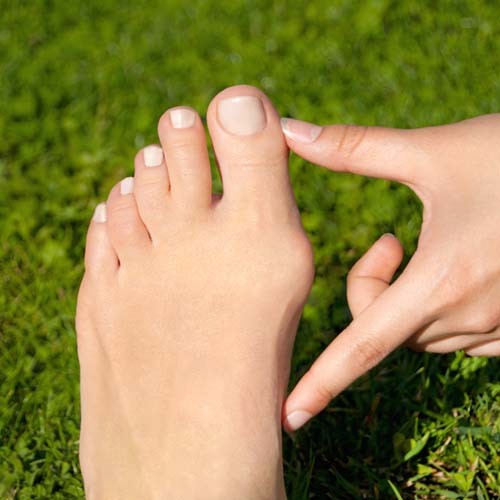
Keyhole (Minimally Invasive) Bunion Surgery
Minimally invasive (keyhole) bunion surgery is a technique that reduces the size of the incisions during the surgical procedure. Using specialised small tools, your surgeon performs the entire bunion removal surgery through several small cuts, reducing scarring and recovery time.
Dr George Dracopoulos is currently the only orthopaedic surgeon at Orthopaedics SA offering this surgery. Dr Dracopoulos has been performing bunion correction surgery for over 20 years and has performed several thousand successful surgeries. He has completed three cadaver workshops on this new keyhole method and spent time in Sydney learning this technique from a world leader in the field in 2017.
Dr Dracopoulos can discuss whether you are an appropriate case for keyhole bunion removal surgery, and help you make the choice between keyhole and open surgery with his wealth of experience.
Keyhole bunion correction surgery involves cutting the bones with a fine, high-speed burr through several very small incisions in the foot. This allows bunion correction with minimal damage to the surrounding tissues.
After the bones are cut, they are repositioned to narrow the foot and realign the big toe. Bone screws are inserted to prevent the newly positioned bones from moving out of place and the surgical incision is closed with stitches. A dressing is then applied to protect the site.
As keyhole bunion surgery is still a relatively new procedure it is constantly evolving to become much more reliable and reproducible. It is currently in its third generation and continues to develop.
What anaesthetic is used?
Keyhole bunion surgery is usually done under a general anaesthetic. A local ankle block is also used for post-operative pain relief.
Most patients stay in the hospital overnight but minimally invasive bunion correction can be performed as a day surgery if there is adequate support for the patient at home.
Walking the next day is allowed in a special shoe, and rest and elevation are required for the first two weeks following the bunion surgery.
The foot remains bandaged until a 2 week review, at which stage the bandages are reduced. The patient will still use the specialised shoe until 4-6 weeks after the surgery. Sensible shoes are worn from 6 weeks on.
Recovery times
The patient can expect to return to work for sedentary duties within 2-3 weeks of their keyhole bunion surgery. For physical work, a recovery period of 6 weeks or longer may be required depending on the demands of the work. Your surgeon will fully discuss your expected recovery period with you prior to surgery.
It takes 3-6 months for most swelling to go down, and 12 months before everything completely heals and settles.
Rehabilitation
Following keyhole bunion surgery, your orthopaedic surgeon will recommend a variety of exercises to help strengthen the muscles in your foot and to help reduce blood pooling in the calf muscle. These may be different for individual patients and your surgeon will let you know what exercises to do and how often to do them.
Most keyhole bunion surgery is very successful, but as with any surgery, issues can occur. These complications will be explained by your orthopaedic surgeon before your surgery. Specific issues that may occur include:
· Under correction – the big toe may not be straightened enough, requiring further surgery.
· Over correction – the big toe may appear ‘too straight’.
· Arthritis – this can develop following the correction procedure and lead to pain and stiffness of big toe.
· Prominence of implant and/or bone – this may require removal with further surgery.
Very occasionally a patient may have issues that feel worse than before surgery, and further surgery may be needed, in severe cases even fusion of the big toe.
Studies have suggested that keyhole bunion removal surgery provides equivalent outcomes to open bunion surgery in the long term but with less disruption of tissues. It generally seems to cause less pain, swelling and stiffness in the first few months.
It is important to remember that not all bunion surgery is successful whether performed with minimally invasive techniques or as open surgery. Very occasionally, a patient may have issues that make them feel worse than they did prior to the minimally invasive bunion correction surgery, and further surgery may be needed. This may include a repeat bunion surgery, further corrective measures, removal of screws or fusion of the joints in the big toe (in severe cases).
Book an appointment with our orthopaedic specialists
Book an appointment

